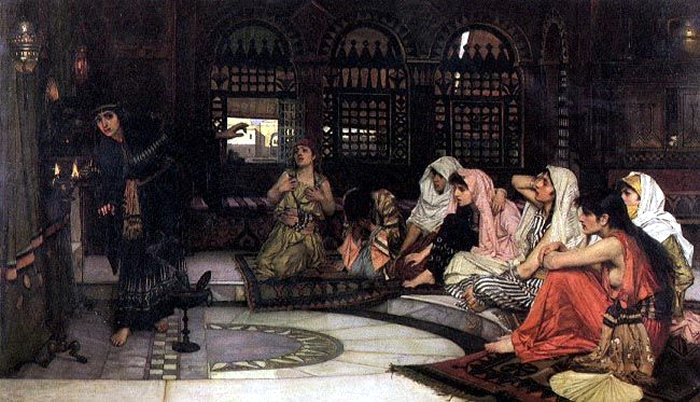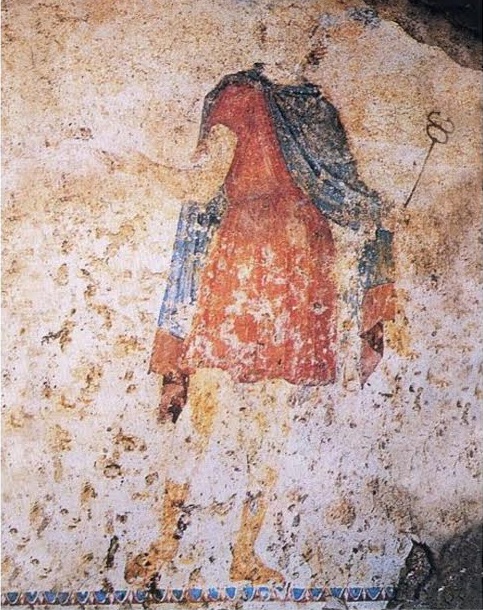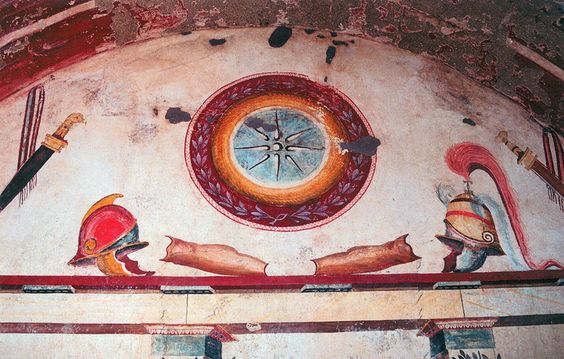The play is set in Troezen, a coastal town in the northeastern Peloponnese. Theseus, the king of Athens, is serving a year's voluntary exile after having murdered a local king and his sons. His illegitimate son is Hippolytos, whose birth is the result of Theseus's rape of the Amazon Hippolyta. Hippolytos has been trained since childhood by the king of Troezen, Pittheus. In it, Theseus's wife, Phaedra, kills herself because she is in love with her stepson Hippolytos instead. It's not her fault, by the way, Aphrodite made her fall in love with him because Hippolytos refuses to honor Aphrodite and honors Artemis instead.Theseus discovers a letter on Phaedra's body, which falsely asserts that she was raped by Hippolytos. Enraged, Theseus curses his son either to death or at least exile and calls upon his father Poseidon, who has promised to grant His son three wishes. Hippolytos gets in his chariot to leave the kingdom, then a bull roars out of the sea, frightens his horses, which dash his chariot among the rocks, dragging Hippolytos behind. Hippolytos seems to be dying and Artemis comes to tell Theseus he made a mistake, that there was no rape, and Theseus gets to at least beg forgiveness of his son before Hippolytos dies.
In honor of the sea and Poseidon, let me give you the description of that gruesome and majestic charge of the water today.
"Just there an angry sound,
Slow-swelling, like God's thunder underground
Broke on us, and we trembled. And the steeds
Pricked their ears skyward, and threw back their heads.
And wonder came on all men, and affright,
Whence rose that awful voice. And swift our sight
Turned seaward, down the salt and roaring sand.
Slow-swelling, like God's thunder underground
Broke on us, and we trembled. And the steeds
Pricked their ears skyward, and threw back their heads.
And wonder came on all men, and affright,
Whence rose that awful voice. And swift our sight
Turned seaward, down the salt and roaring sand.
And there, above the horizon, seemed to stand
A wave unearthly, crested in the sky;
Till Skiron's Cape first vanished from mine eye,
Then sank the Isthmus hidden, then the rock
Of Epidaurus. Then it broke, one shock
And roar of gasping sea and spray flung far,
And shoreward swept, where stood the Prince's car.
A wave unearthly, crested in the sky;
Till Skiron's Cape first vanished from mine eye,
Then sank the Isthmus hidden, then the rock
Of Epidaurus. Then it broke, one shock
And roar of gasping sea and spray flung far,
And shoreward swept, where stood the Prince's car.
Three lines of wave together raced, and, full
In the white crest of them, a wild Sea-Bull
Flung to the shore, a fell and marvellous Thing.
The whole land held his voice, and answering
Roared in each echo. And all we, gazing there,
Gazed seeing not; 'twas more than eyes could bear.
In the white crest of them, a wild Sea-Bull
Flung to the shore, a fell and marvellous Thing.
The whole land held his voice, and answering
Roared in each echo. And all we, gazing there,
Gazed seeing not; 'twas more than eyes could bear.
Then straight upon the team wild terror fell.
Howbeit, the Prince, cool-eyed and knowing well
Each changing mood a horse has, gripped the reins
Hard in both hands; then as an oarsman strains
Up from his bench, so strained he on the thong,
Back in the chariot swinging. But the young
Wild steeds bit hard the curb, and fled afar;
Nor rein nor guiding hand nor morticed car
Stayed them at all. For when he veered them round,
And aimed their flying feet to grassy ground,
In front uprose that Thing, and turned again
The four great coursers, terror-mad. But when
Their blind rage drove them toward the rocky places,
Silent and ever nearer to the traces,
It followed rockward, till one wheel-edge grazed.
Howbeit, the Prince, cool-eyed and knowing well
Each changing mood a horse has, gripped the reins
Hard in both hands; then as an oarsman strains
Up from his bench, so strained he on the thong,
Back in the chariot swinging. But the young
Wild steeds bit hard the curb, and fled afar;
Nor rein nor guiding hand nor morticed car
Stayed them at all. For when he veered them round,
And aimed their flying feet to grassy ground,
In front uprose that Thing, and turned again
The four great coursers, terror-mad. But when
Their blind rage drove them toward the rocky places,
Silent and ever nearer to the traces,
It followed rockward, till one wheel-edge grazed.
The chariot tript and flew, and all was mazed
In turmoil. Up went wheel-box with a din,
Where the rock jagged, and nave and axle-pin.
And there—the long reins round him—there was he
Dragging, entangled irretrievably.
A dear head battering at the chariot side,
Sharp rocks, and rippled flesh, and a voice that cried:
"Stay, stay, O ye who fattened at my stalls,
Dash me not into nothing!—O thou false
Curse of my Father!—Help! Help, whoso can,
An innocent, innocent and stainless man!"
In turmoil. Up went wheel-box with a din,
Where the rock jagged, and nave and axle-pin.
And there—the long reins round him—there was he
Dragging, entangled irretrievably.
A dear head battering at the chariot side,
Sharp rocks, and rippled flesh, and a voice that cried:
"Stay, stay, O ye who fattened at my stalls,
Dash me not into nothing!—O thou false
Curse of my Father!—Help! Help, whoso can,
An innocent, innocent and stainless man!"
Many there were that laboured then, I wot,
To bear him succour, but could reach him not,
Till—who knows how?—at last the tangled rein
Unclasped him, and he fell, some little vein
Of life still pulsing in him."
To bear him succour, but could reach him not,
Till—who knows how?—at last the tangled rein
Unclasped him, and he fell, some little vein
Of life still pulsing in him."









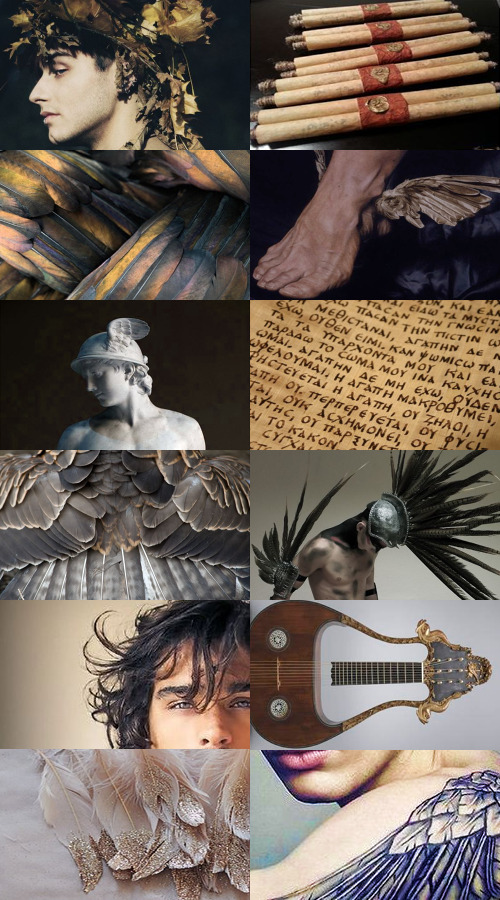



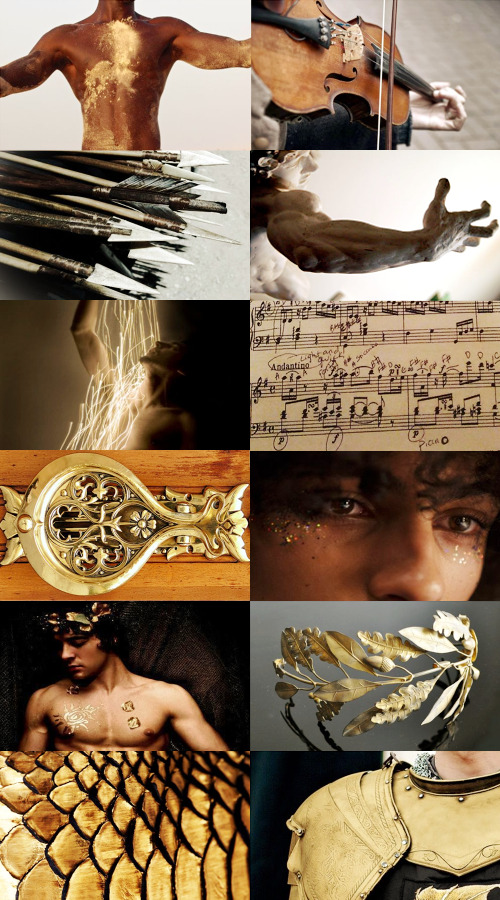
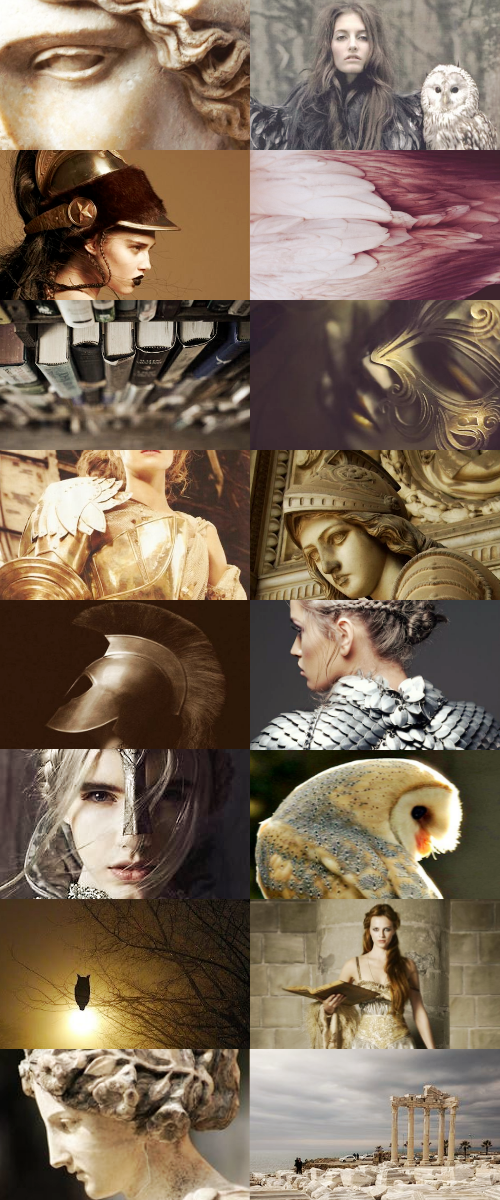





.jpg/1024px-WATERHOUSE_-_Ulises_y_las_Sirenas_(National_Gallery_of_Victoria%2C_Melbourne%2C_1891._%C3%93leo_sobre_lienzo%2C_100.6_x_202_cm).jpg)




